Yaware has long been a recognizable tool for employee control and time tracking, yet today’s market offers dozens of worthy replacements. Some companies dislike the excessive level of surveillance, others struggle with an outdated interface or the lack of deep analytics in the base plan. If you need a reliable Yaware alternative, this article gathers modern platforms that meet transparency and data-protection requirements. We will examine the strengths of each system and highlight the scenarios in which it outperforms Yaware. Special attention goes to Worksection, whose “all features in every plan” philosophy sets it apart from the competition.
Why Do Users Look for Yaware Alternatives?
Switching to a new platform is usually driven by a mix of practical and ethical concerns. First, excessive employee control can erode trust, especially when a tool captures screen-shots every few minutes and stores them unencrypted. Second, weak UX slows daily processes: if generating a report takes longer than doing the actual work, people inevitably search for more intuitive solutions. Third, there is the privacy conflict, as GDPR and Ukrainian regulations require companies to specify which data are collected and who can access them. Finally, many teams dislike that productivity analytics in Yaware sit behind higher-tier paywalls. Modern hybrid companies need tools where tracking, analytics, and reporting are part of the entry package — without hidden fees.
Criteria for Choosing a Monitoring and Time-Tracking System
- Transparency and trust. A “no hidden software” policy fosters a healthy atmosphere: employees see what data are gathered, while managers still receive clear reports.
- Data protection. Look for AES-256 encryption and ISO 27001 compliance.
- Report convenience. The more flexible the filters and visualizations, the easier it is for managers to spot bottlenecks and for staff to prove real workload.
- Automatic tracking. Algorithms that detect session start and end reduce human error and save hours on routine input.
- Remote-team compatibility. Mobile apps, offline tracking, and messenger integrations are critical when part of the staff works from home or travels.
Best Yaware Alternatives in 2025
Worksection
Worksection elevates project management to an “all-inclusive” level. The platform bundles Kanban boards, Gantt charts, a shared calendar, and a built-in time tracker in every plan — no upgrades or hidden charges. Each task stores comments, files, and check-lists, so context is never lost. Unlike Yaware, the focus is not on total surveillance but on process transparency. Project owners decide which metrics matter: detailed hour reports, workload charts, or a simple “plan vs. actual” summary. You can invite clients and contractors with partial access, showing only relevant tasks. This balance preserves trust while maintaining precise time tracking.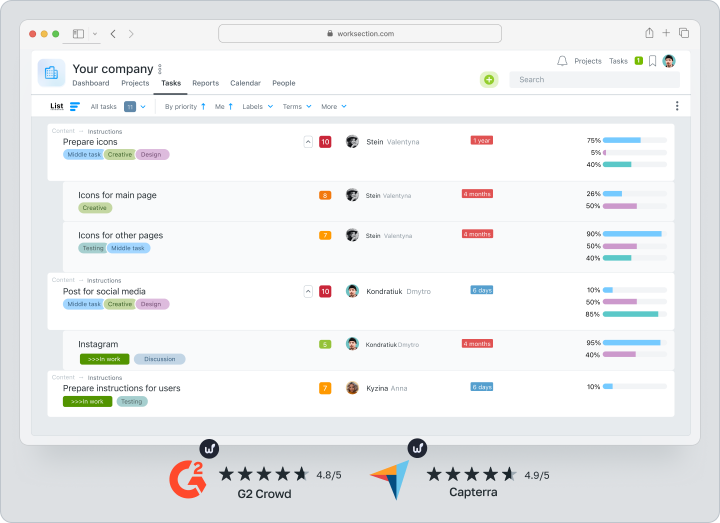
Time Doctor
Time Doctor suits teams that need strict employee control: the platform takes screenshots, records keystrokes, tracks app usage, and even logs GPS locations. Flexible reports drill down to each contributor or department, while automatic alerts flag burnout risks. A bonus is the built-in wage calculator, which simplifies hourly payouts to freelancers.
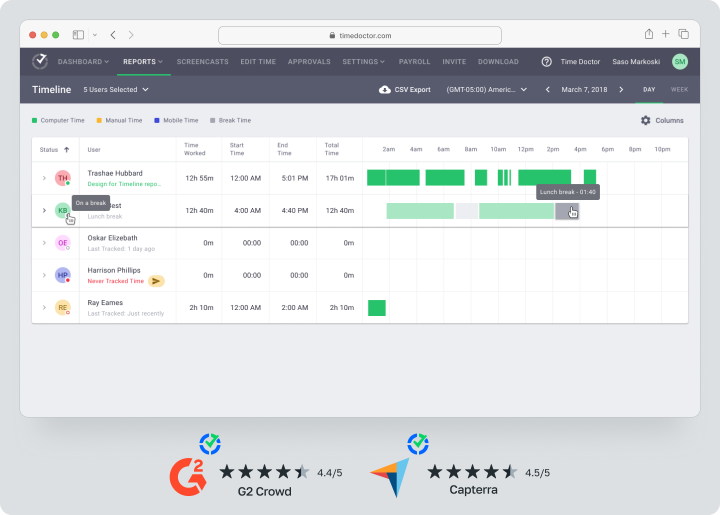
Hubstaff
Hubstaff is renowned for its GPS module and ability to manage field workers — couriers, installers, consultants. The service covers time tracking, automatic invoicing, and integrations with 30+ external systems, including Jira and QuickBooks. Its hallmark is “geofenced tasks,” where work is tied to a specific spot on the map.
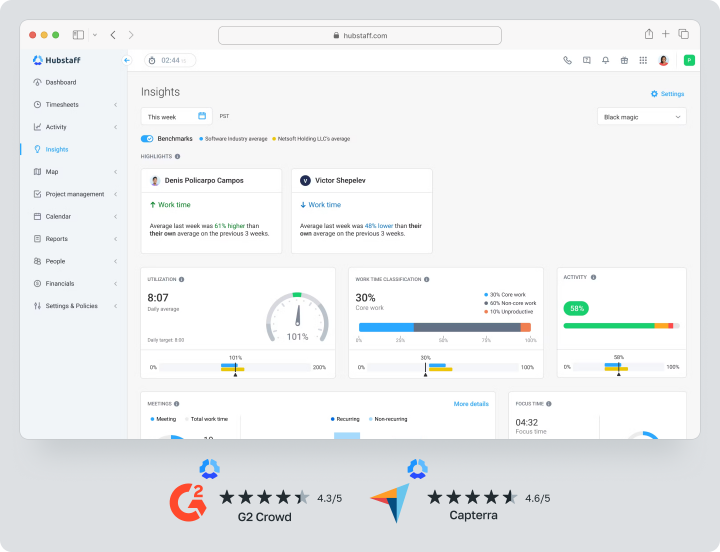
Toggl Track
Toggl Track is a gentle monitoring alternative designed for high-trust teams. A one-click timer, browser extensions, and a robust API make it a convenient self-management tool. The app never takes screenshots or harvests personal data, which appeals to developers and creative agencies that value privacy over control.
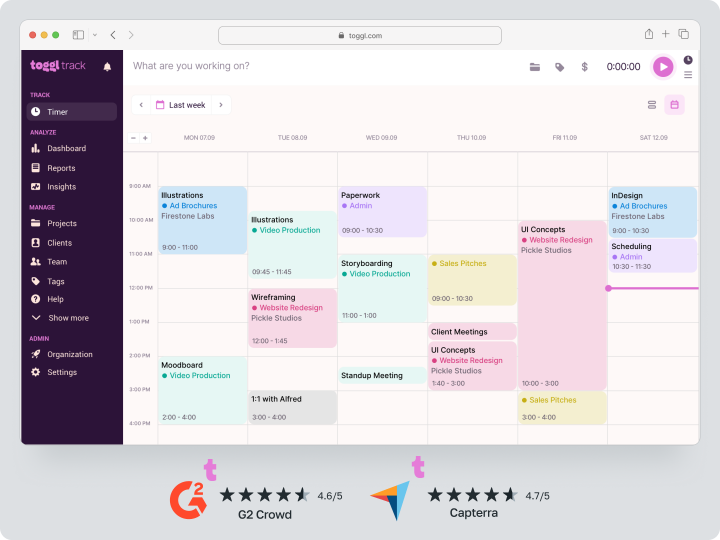
DeskTime
DeskTime automatically classifies productive and unproductive apps, forming a heat-map of the day. Managers see how long tasks really take, while users receive personal tips for optimizing their schedules. The built-in calendar lets you plan meetings and instantly compare planned vs. actual duration.
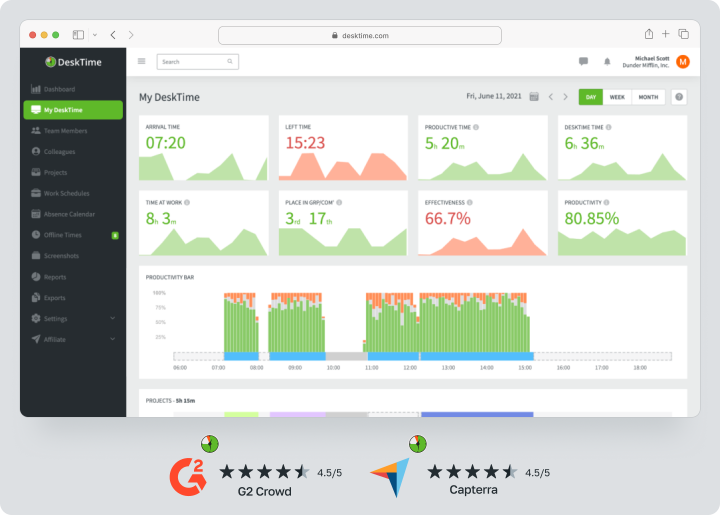
Kickidler
Kickidler markets itself as “PC video surveillance.” Beyond classic time tracking, an admin can watch a live employee screen and get instant alerts on policy violations. This level of detail is useful for accounting or finance teams, where mistakes can be costly.
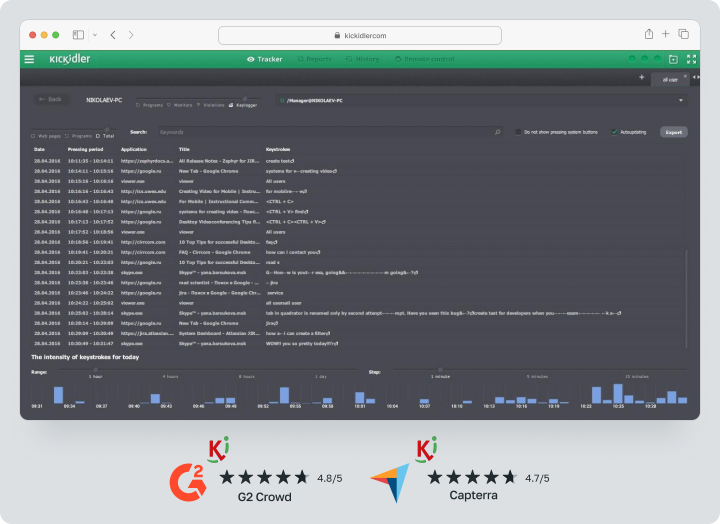
RescueTime
RescueTime focuses on personal productivity: the service silently gathers statistics and sends a weekly report with recommendations. Its distraction-blocking tool helps maintain focus. For teams, aggregated dashboards show overall trends without invading personal space.
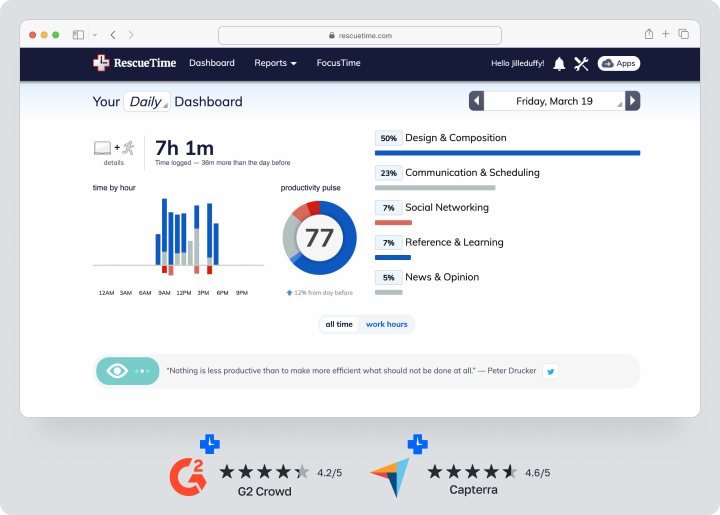
ActivTrak
ActivTrak delivers advanced analytics: activity heat-maps, a focus-loss funnel, and overload forecasts. AI detects behavioral anomalies and warns managers about potential data-security risks.
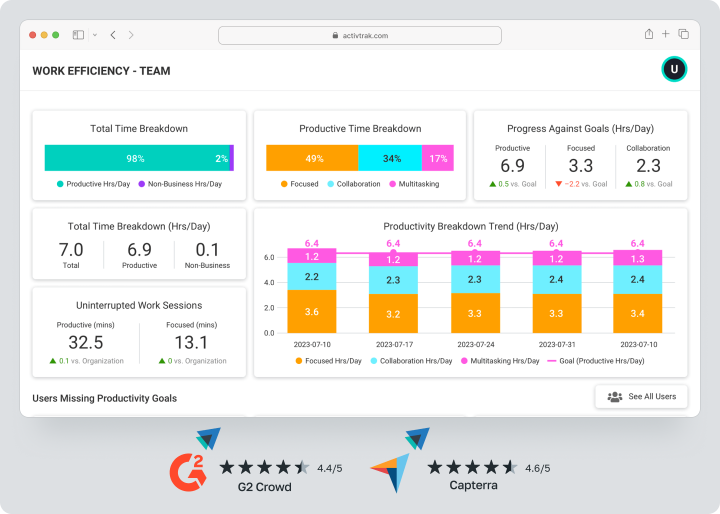
Clockify
Clockify is a popular free time tracker with unlimited users. The platform supports projects, tags, budgets, and exports reports to CSV and PDF. It lacks Yaware-style screenshots, yet for companies that need pure time tracking Clockify is ideal.
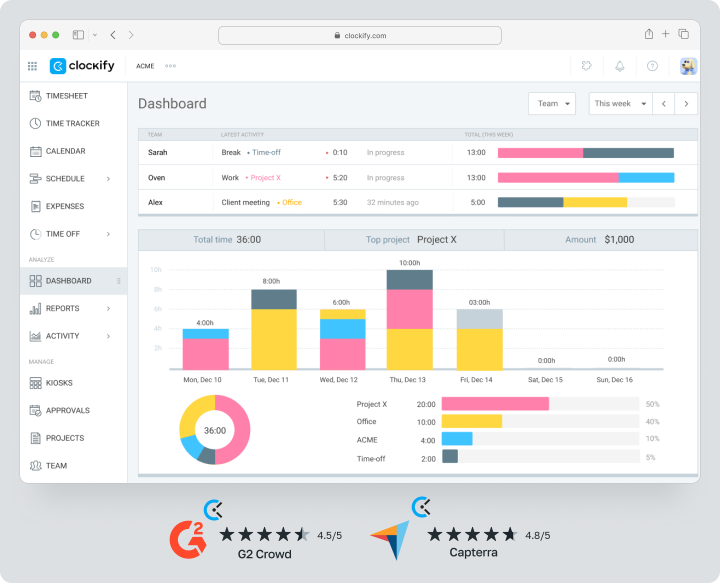
TMetric
TMetric appeals to product and service teams that rely on Trello, Jira, or Asana. The timer integrates in a single click, and flexible reports let you bill clients on actuals or plan sprints. The minimalist interface takes minutes to master.
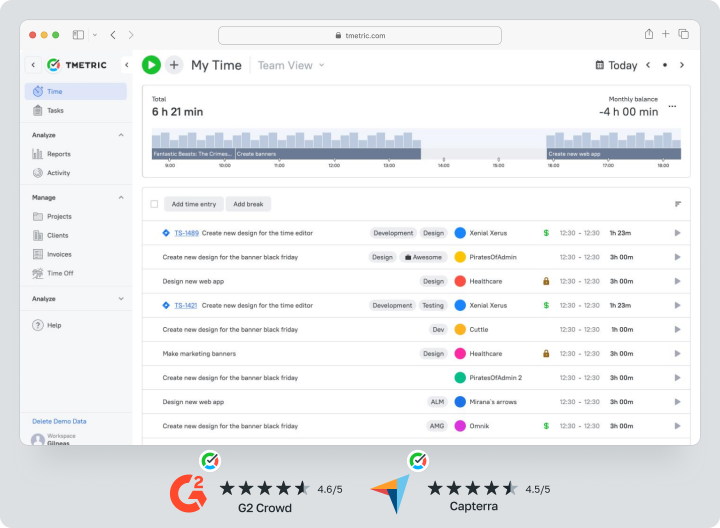
Comparison Table of the Best Yaware Alternatives
| Service | Time Tracking | Employee Control | Reports & Analytics | Automation | Price (from) | Remote-Team Ready |
| Worksection | Built-in tracker | No screenshots, trust-first | Gantt, workload, CSV export | Tasks, reminders, check-lists | $4/user | Yes |
| Time Doctor | Timer + autostart | Screenshots, keys, URLs | 20+ reports, hourly payroll | Auto invoices | $7/user | Yes |
| Hubstaff | Online & offline | Screenshots, GPS | Project & task logs | Timesheets, payments | $5.83/user | Yes |
| Toggl Track | Timer, offline | No screenshots | Flexible visuals | API, web-hooks | Free | Yes |
| DeskTime | Autostart, URLs | App classification | Productivity heat-map | Calendar sync | $7/user | Yes |
| Kickidler | Timer | Live video, alerts | Anti-fraud reports | Hotkeys | $9/user | Partial |
| RescueTime | Passive capture | No screenshots | Weekly insights | Focus filter | $6/user | Yes |
| ActivTrak | Passive capture | Event screenshots | AI analytics, heat-maps | Anomaly engine | $10/user | Yes |
| Clockify | Timer | None | Basic reports | Integrations | Free | Yes |
| TMetric | Timer | URL logging | Sprint & budget reports | Budgets, sprints | $5/user | Yes |
Which Platform Should You Choose in 2025?
Your choice depends on company culture and goals. If you require strict oversight with screenshots and geolocation, Time Doctor and Hubstaff lead the pack. For teams where trust matters more than constant surveillance, Worksection is the best Yaware replacement: it merges time tracking, task management, and advanced reporting without invading personal space. If you need a free, lightweight tracker, Clockify or Toggl Track fit perfectly. Behavior analytics and team-wide efficiency insights are ActivTrak’s and DeskTime’s strong points.
Frequently Asked Questions (FAQ)
Which Yaware alternative works best for remote teams?
Practically, Hubstaff or Time Doctor are the easiest to roll out: both offer mobile apps, offline tracking, and automatic invoicing for contractors across time zones.
Are there free Yaware alternatives?
Yes. Clockify delivers full basic functionality for free and places no limits on projects. Toggl Track also has a free tier with unlimited timers and users, though advanced reports require an upgrade.
How is Worksection different from Yaware?
Worksection focuses on efficiency rather than surveillance. The platform does not capture screenshots or log keystrokes. Instead, it offers transparent planning tools, workload assessment, and precise time tracking. Employees feel trusted, while managers still see real deadlines and hours, making Worksection a universal fit for companies of any size.